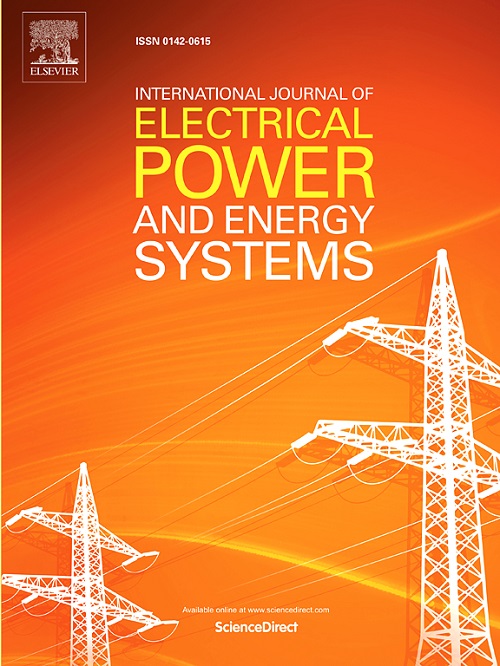基于变压器- lstm的风电预测多任务学习模型
IF 5
2区 工程技术
Q1 ENGINEERING, ELECTRICAL & ELECTRONIC
International Journal of Electrical Power & Energy Systems
Pub Date : 2025-05-29
DOI:10.1016/j.ijepes.2025.110732
引用次数: 0
摘要
将多任务学习集成到多步骤确定性和概率预测框架中,在提高风电预测的准确性和减轻相关的运行不确定性方面起着关键作用。目前风电预测研究多集中在单任务确定性预测上,而针对多步骤确定性预测和概率预测的多任务学习研究较少。为此,提出了一种基于变压器-长短期记忆(LSTM)的多任务学习模型,用于多步确定性和概率风电预测。首先,提出了一种基于扩展因果卷积网络、Transformer、LSTM和L2正则化的深度学习混合方法(DLH)来提取风电时间序列的多维复杂非线性特征。然后,将DLH引入多任务学习模型的任务共享层,实现多步确定性预测。此外,将多任务学习模型与分位数回归相结合,建立了描述风电预测不确定性的概率预测模型。最后,为了提高预测精度,提出了一种新的启发式算法,即基于Cauchy突变的麋鹿群和沙猫群混合优化算法,对模型超参数进行优化。本文提出的确定性和概率预测模型已应用于西北某风电场的运行数据集。与23个最先进的确定性模型相比,该模型的平均绝对误差最小为0.3174,最大为9.190,平均降低2.278。实验结果还证实,当与六个高级基准并置时,所提出的概率模型表现出优越的区间清晰度。本文章由计算机程序翻译,如有差异,请以英文原文为准。
A novel multi-task learning model based on Transformer-LSTM for wind power forecasting
The integration of multi-task learning into multi-step deterministic and probabilistic prediction frameworks plays a pivotal role in augmenting the accuracy of wind power forecasts and mitigating associated operational uncertainties. Current wind power forecasting research usually focuses on single-task deterministic forecasting, but there is less research on multi-task learning for multi-step deterministic and probabilistic forecasting. To achieve this, a novel multi-task learning model based on Transformer-Long short-term memory (LSTM) for multi-step deterministic and probabilistic wind power forecasting. First, a novel deep learning hybrid approach (DLH) based on the dilated causal convolutional network, Transformer, LSTM, and L2 regularization is proposed to extract multi-dimensional and complex nonlinear features of wind power time series. Then, the DLH is introduced into the task-sharing layer of the multi-task learning model for multi-step deterministic prediction. In addition, a probabilistic forecasting model that integrates the proposed multi-task learning model and quantile regression is formulated to describe the forecast uncertainty of wind power. Finally, to improve the prediction accurateness, a new heuristic algorithm, namely hybrid Cauchy mutation-based Elk herd and sand cat swarm optimization, is proposed to optimize the model hyperparameters. The proposed deterministic and probabilistic forecasting models have been applied to operational datasets from a northwest China wind farm. Compared to 23 state-of-the-art deterministic models, the proposed model reduces the mean absolute error by a minimum of 0.3174 and a maximum of 9.190, with an average reduction of 2.278. Experimental outcomes also substantiate that the proposed probabilistic model exhibits superior interval sharpness when juxtaposed against six advanced benchmarks.
求助全文
通过发布文献求助,成功后即可免费获取论文全文。
去求助
来源期刊
CiteScore
12.10
自引率
17.30%
发文量
1022
审稿时长
51 days
期刊介绍:
The journal covers theoretical developments in electrical power and energy systems and their applications. The coverage embraces: generation and network planning; reliability; long and short term operation; expert systems; neural networks; object oriented systems; system control centres; database and information systems; stock and parameter estimation; system security and adequacy; network theory, modelling and computation; small and large system dynamics; dynamic model identification; on-line control including load and switching control; protection; distribution systems; energy economics; impact of non-conventional systems; and man-machine interfaces.
As well as original research papers, the journal publishes short contributions, book reviews and conference reports. All papers are peer-reviewed by at least two referees.

 求助内容:
求助内容: 应助结果提醒方式:
应助结果提醒方式:


